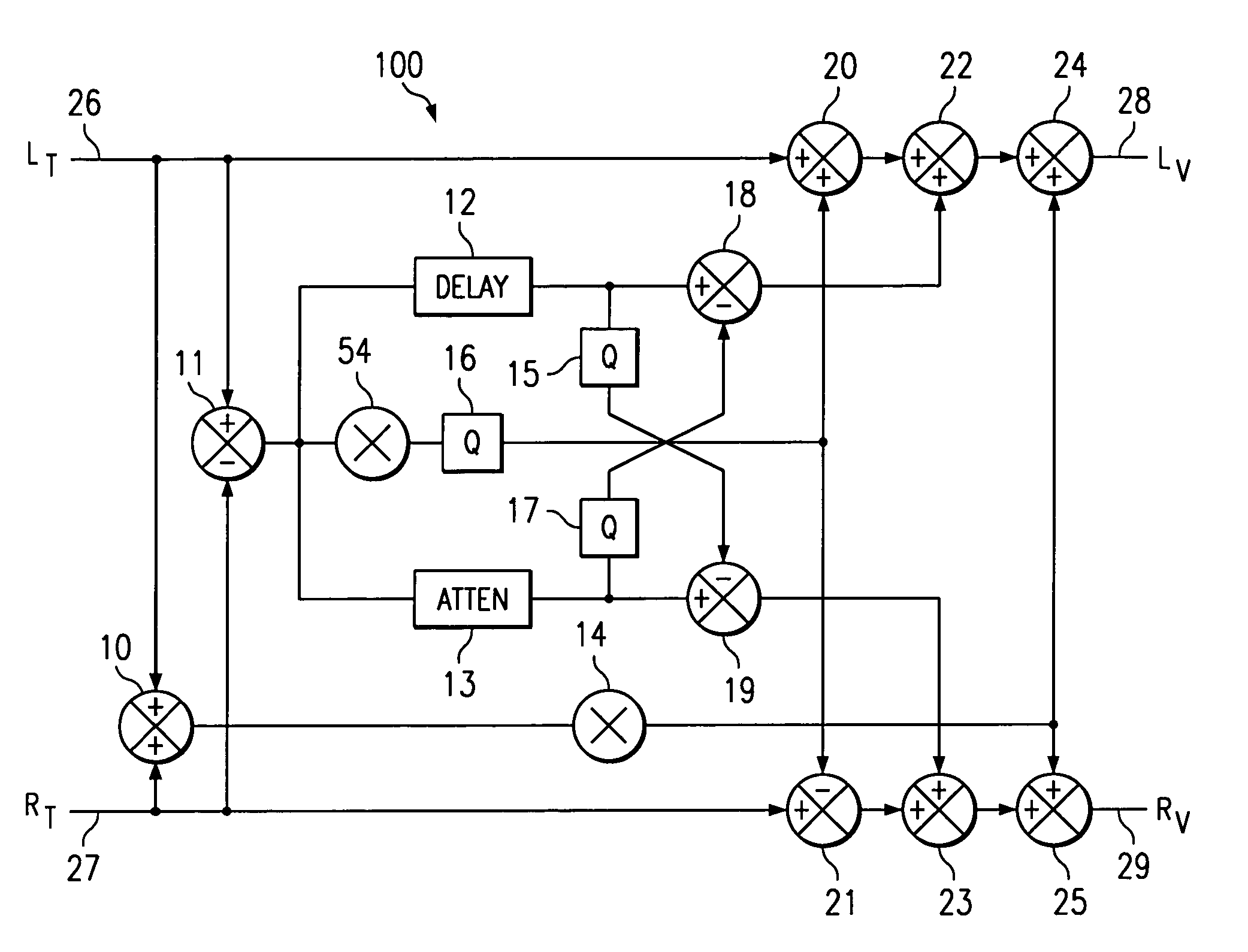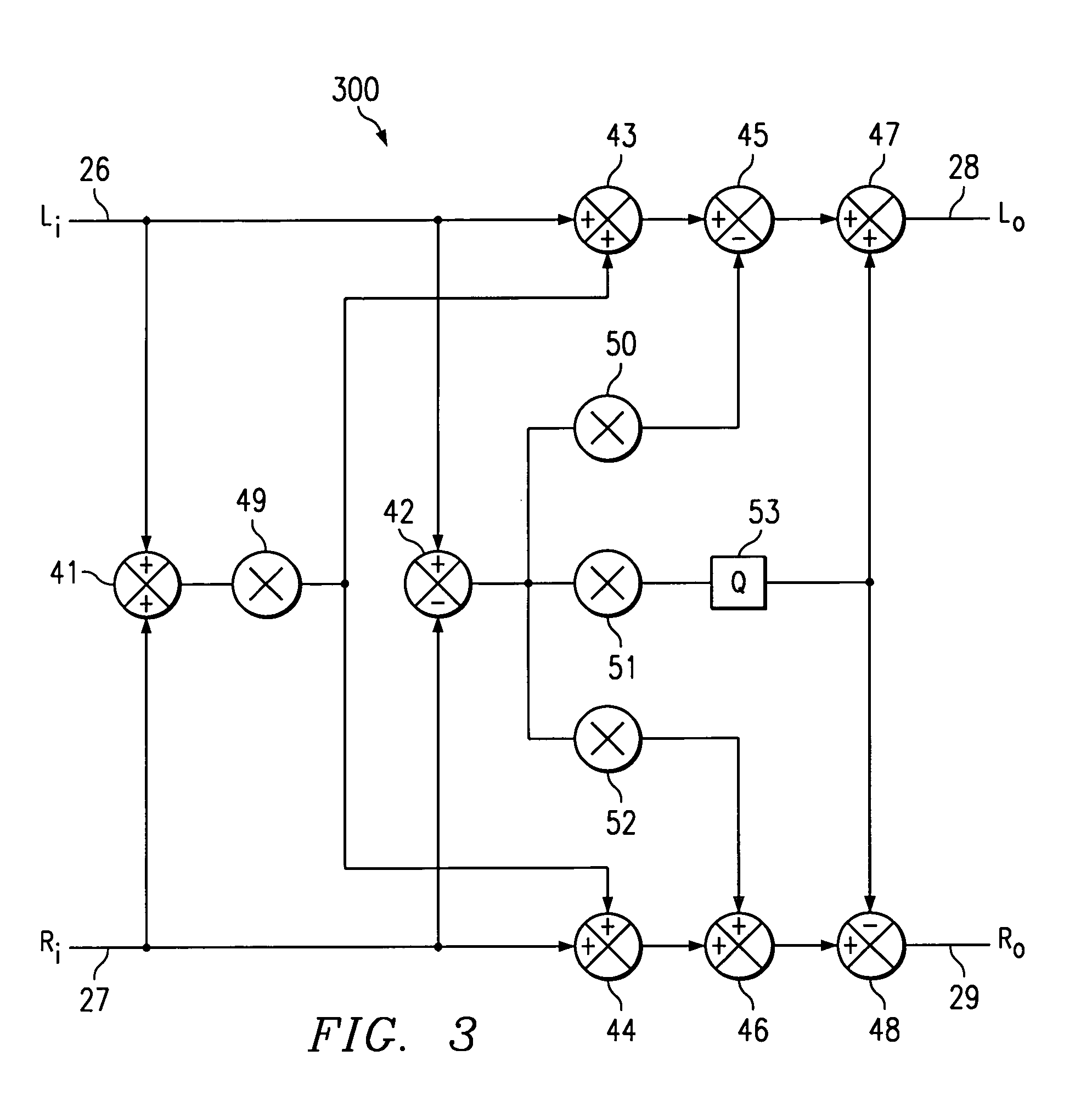Matrix surround decoder/virtualizer
a matrix surround and virtualizer technology, applied in the field of audio signal processing, can solve the problems of decoding dolby encoded audio materials, inability to place speakers, and limited resources of listeners,
- Summary
- Abstract
- Description
- Claims
- Application Information
AI Technical Summary
Benefits of technology
Problems solved by technology
Method used
Image
Examples
Embodiment Construction
[0019]FIG. 1 depicts a preferred embodiment of the inventive mechanism. In the inventive arrangement 100 of FIG. 1, a two-channel stereo input from an A / V source, which includes encoded surround information, is converted into output signals. Left input 26 and right input 27 include four different signal portions-left, right, center, and surround. The input signals are processed into left output 28 and right output 29. Although only two outputs are shown, other outputs can be provided for rear or surround channels, a center channel, and / or a sub-woofer channel. The inventive arrangement 100 of FIG. 1 is subdivided into three sub-systems.
[0020]The first sub-system is used to provide a phantom center output. As shown in FIG. 2, the sound image of the phantom center location 33 appears to listener 30 to be placed between left 31 and right 32 speakers. Note that the left and right speakers are connected to left output 28 and right output 29 of FIG. 1, respectively. This sub-system may in...
PUM
 Login to View More
Login to View More Abstract
Description
Claims
Application Information
 Login to View More
Login to View More - R&D
- Intellectual Property
- Life Sciences
- Materials
- Tech Scout
- Unparalleled Data Quality
- Higher Quality Content
- 60% Fewer Hallucinations
Browse by: Latest US Patents, China's latest patents, Technical Efficacy Thesaurus, Application Domain, Technology Topic, Popular Technical Reports.
© 2025 PatSnap. All rights reserved.Legal|Privacy policy|Modern Slavery Act Transparency Statement|Sitemap|About US| Contact US: help@patsnap.com



